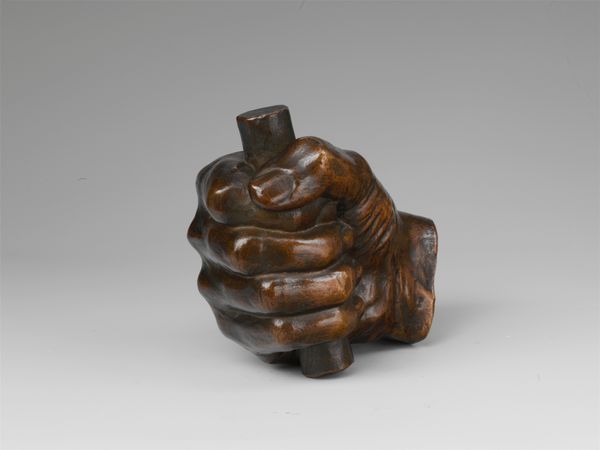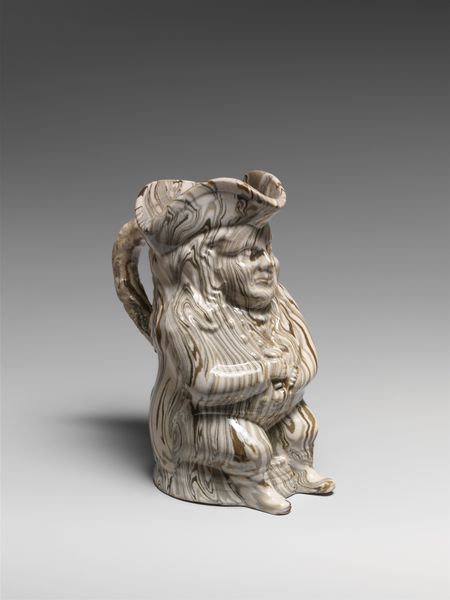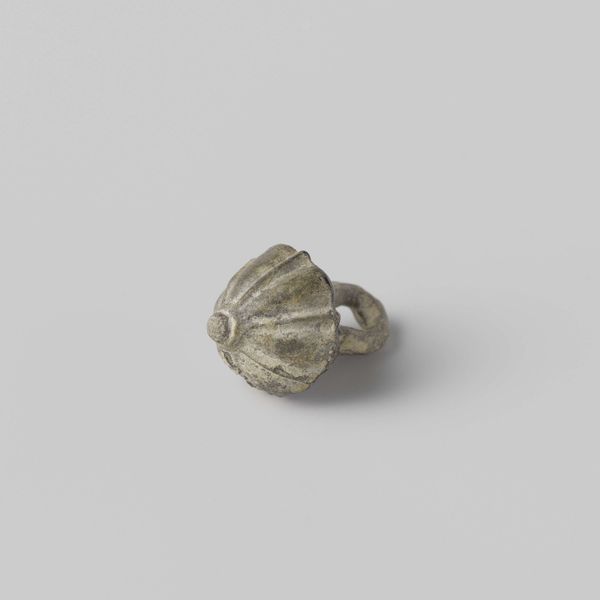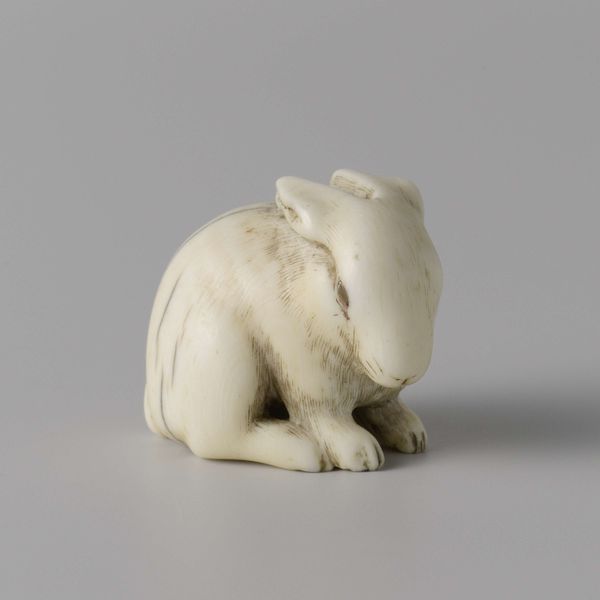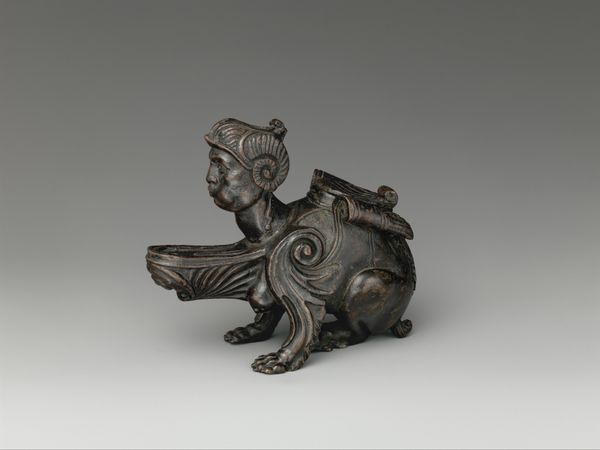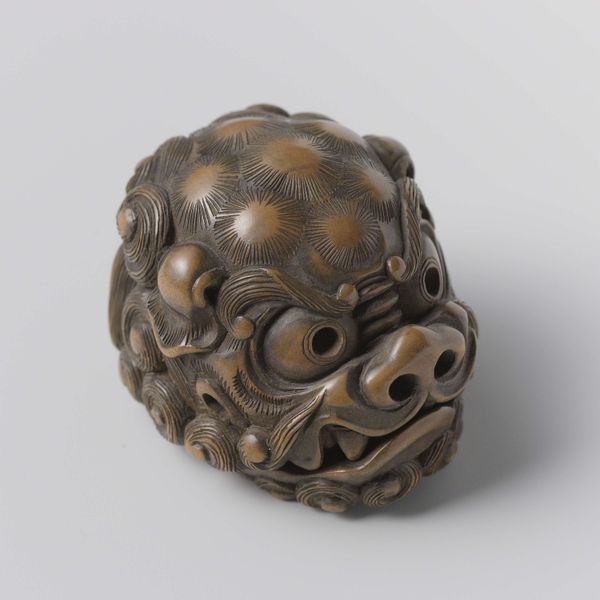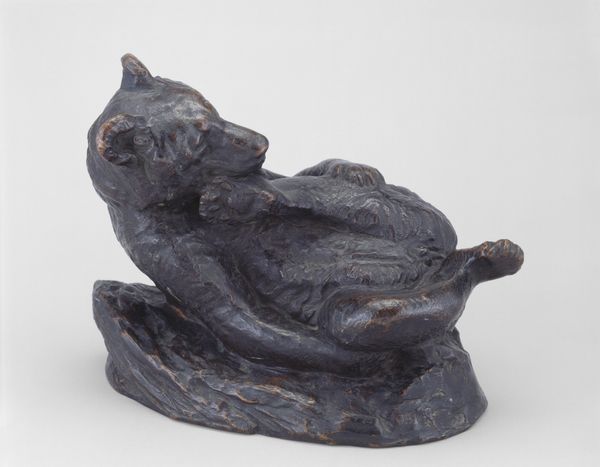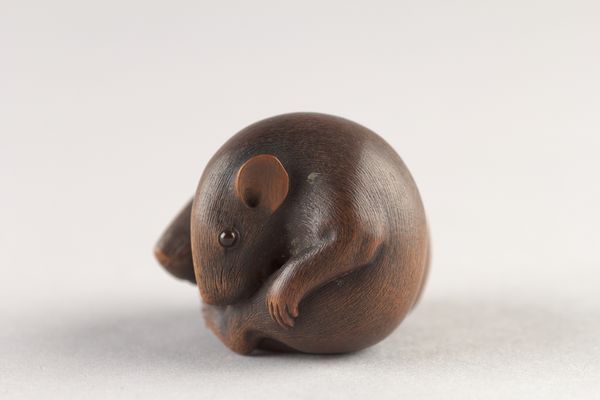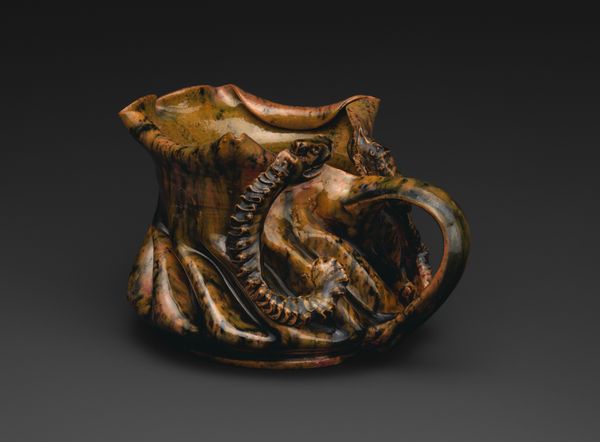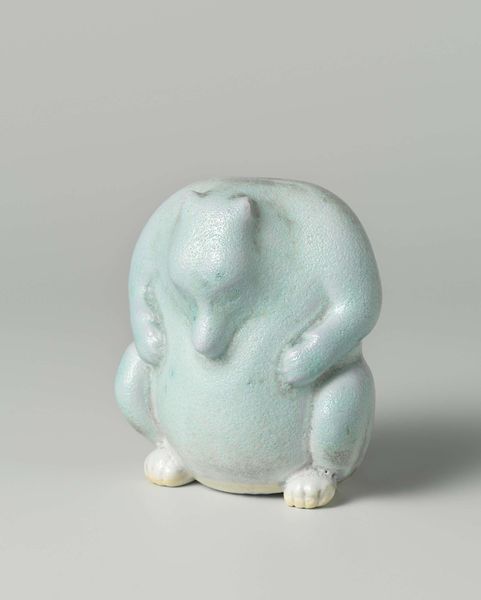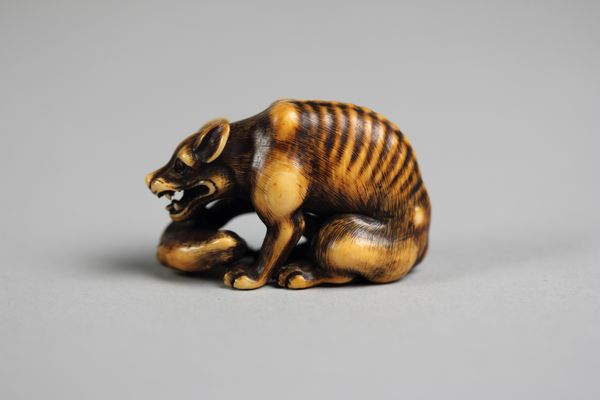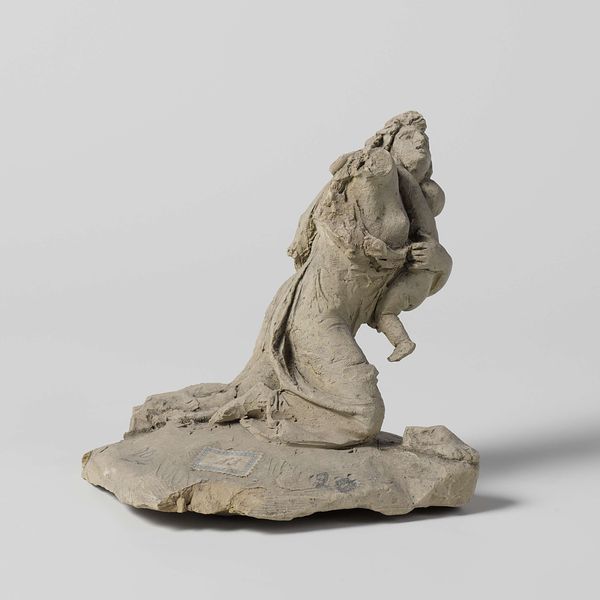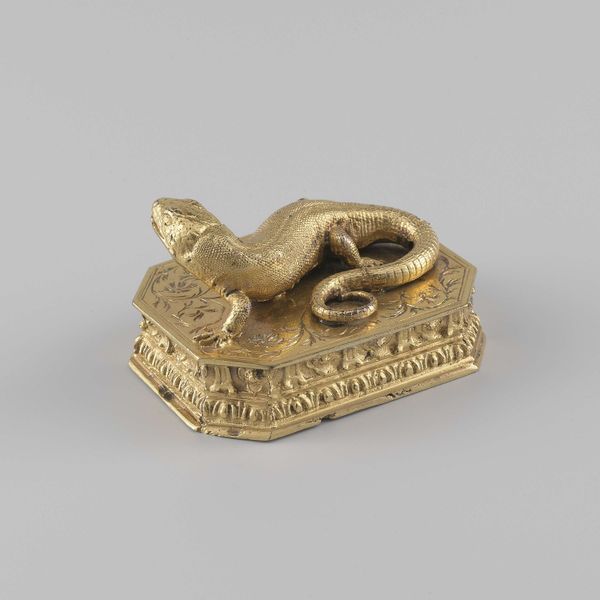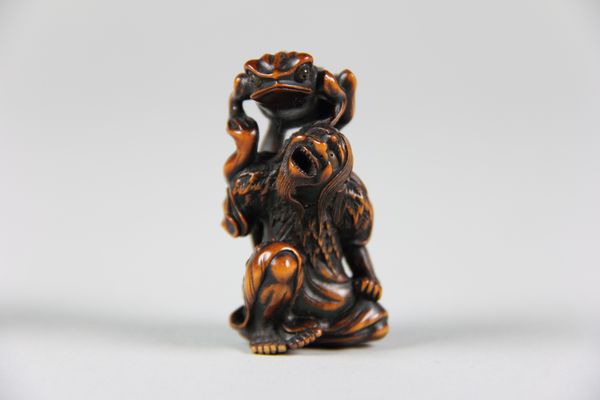
sculpture, wood
#
asian-art
#
sculpture
#
animal portrait
#
wood
#
natural
Copyright: Rijks Museum: Open Domain
Editor: We’re looking at a wooden netsuke, a small sculpture of a tiger, crafted around 1825 by Toyomasa. It’s… surprisingly endearing, considering it’s a tiger. The detail in the carving is remarkable. What do you see in this piece, Professor? Curator: Primarily, I am struck by how the artist has used the material, wood, to its full potential. The grain becomes an integral part of the tiger’s stripes, doesn't it? The artist demonstrates a keen understanding of form and volume. Notice how the compact, rounded body creates a sense of contained energy. It invites the viewer to examine its shape and construction from every angle. Editor: Yes, the curled tail really adds to that sense of contained form. Does the fact that it's a netsuke, meant to be carried, affect its artistic value? Curator: Absolutely. Its function dictates its form. The smooth, rounded surfaces and compact size ensure it is comfortable to handle and won’t snag on clothing. Furthermore, it’s designed for tactile appreciation. Do you agree that the value lies in both its aesthetic appeal and its practical design? Editor: I do now. Before, I was just thinking about the representation, but now I see how the form itself is so essential. Thank you for drawing attention to that! Curator: My pleasure. Analyzing an artwork by considering the object's formal properties often offers fresh perspectives. Editor: Exactly. I’ll definitely look at artworks differently going forward, focusing more on form and materiality.
Comments
No comments
Be the first to comment and join the conversation on the ultimate creative platform.
